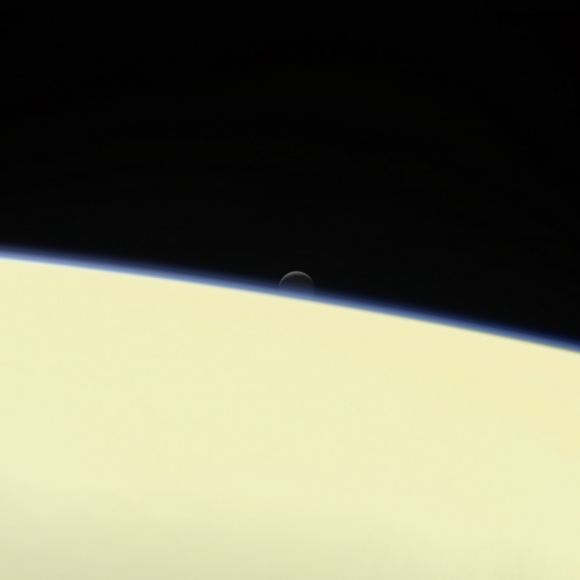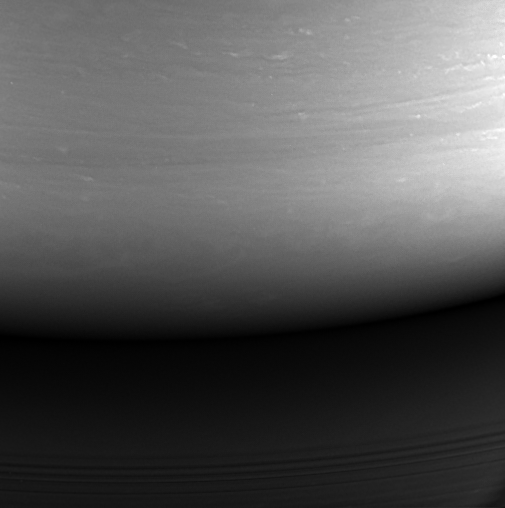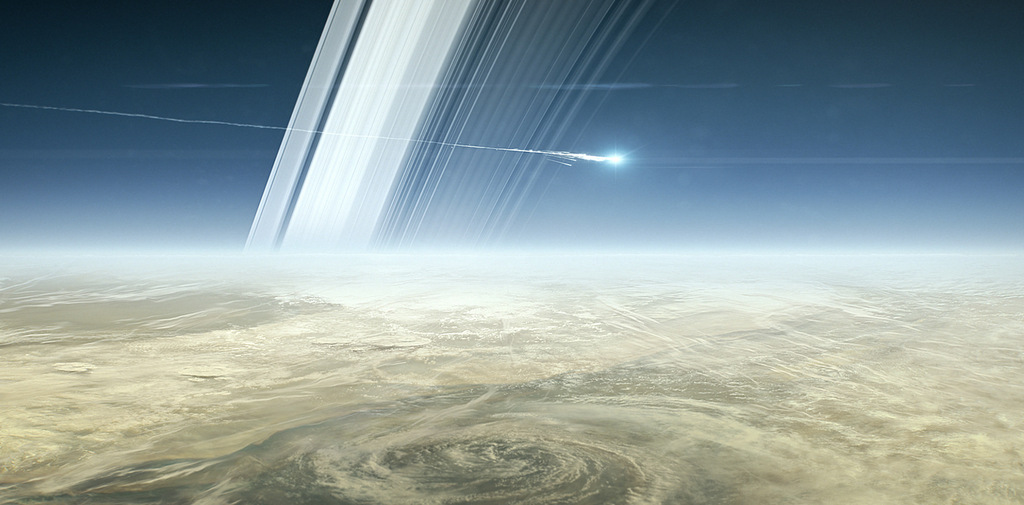Until the very end, Cassini displayed just how robust and enduring this spacecraft has been throughout its entire 20 years in space and its 13-year mission at Saturn. As Cassini plummeted through the ringed-planet’s atmosphere, its thrusters fought the good fight to keep the antenna pointed at Earth for as long as possible, sending as much of the last drops of science data as it could.
Cassini endured about 40 seconds longer than expected before loss of signal was called at 11:55:46 UTC
“I hope you’re all deeply proud of this accomplishment,” said Cassini Project Manager Earl Maize in JPL’s Mission Control Center after Cassini’s signal was lost. “This has been an incredible mission, and incredible spacecraft and an incredible team. I’m going to call this the end of mission. Project Manager off the net.”
Earth received @CassiniSaturn’s final signal at 7:55am ET. Cassini is now part of the planet it studied. Thanks for the science #GrandFinale pic.twitter.com/YfSTeeqbz1
— NASA (@NASA) September 15, 2017
Of course, the actual demise of Cassini took place about an hour and 23 minutes before, as it took that long for the signal to travel the 1.5 billion km distance from Saturn to Earth.
“This is a bittersweet moment for all of us,” said JPL Director Mike Watkins, “but I think it is more sweet than bitter because Cassini has been such an incredible mission. This is a great time to celebrate the hard work and dedication of those who have worked on this mission.”
Watkins added that almost everything we know about Saturn comes from the Cassini mission. “It made discoveries so compelling that we have to back,” he said. “We will go back and fly through the geysers of Encleadus and we’ll go back to explore Titan… These are incredibly compelling targets.”

Our spacecraft has entered Saturn’s atmosphere, and we have received its final transmission.
— CassiniSaturn (@CassiniSaturn) September 15, 2017
Cassini launched on Oct. 15, 1997, and arrived at Saturn’s in 2004. It studied Saturn’s rings and sent back postcards almost every day of its journeys around the Saturn system, pictures of complex moons, the intriguing rings and the giant gas planet.
It revealed the moon Enceladus as one of the most geothermally active places in our solar system, showing it to be one of the prime targets in the search for life beyond Earth.

Credits: NASA/JPL-Caltech/Space Science Institute
Also, piggybacking along was the Huygens probe to study Saturn’s largest moon, Titan. This landing in 2005 was the first spacecraft to land in the outer solar system.
During its final plunge, Cassini’s instruments captured data on Saturn’s atmosphere, sending a strong signal throughout. As planned, data from eight of Cassini’s science instruments will be providing new insights about Saturn, including hints about the planet’s formation and evolution, and processes occurring in its atmosphere.
This death plunge ensures Saturn’s moons will remain pristine for future exploration.
Over 260 scientists from 17 countries and hundreds of engineers worked with Cassini throughout the entire mission. During Cassini’s final days, mission team members from all around the world gathered at JPL to celebrate the achievements of this historic mission.
Here is the last picture taken by Cassini’s cameras, showing the place where Cassini likely met its demise:

The final images from our nearly 20 years in space are arriving. Unprocessed images are available at: https://t.co/8r5YwwIKVp #GrandFinale pic.twitter.com/46ivtDAdqd
— CassiniSaturn (@CassiniSaturn) September 14, 2017
If you can’t get enough of Cassini, there will be more information coming about this final data, and of course, you can go look at all the images it has sent back here. Also, NASA has provided an ebook for download that includes information and images from the mission.


Wow.. Cassini is really gone… sad. I went up into the coastal mountains last night for some star gazing. The first object to pop out was Arcturus, then Saturn…. so I looked at Saturn and thought about the Cassini missions end. My 12.5″ Newtonian showed me 4 of Saturn’s moons.. nice! I kept coming back to Saturn ask it slid lower and lower down in the west… Buh-bye!
A resent addition to my astronomy tools includes a laser Collimator by Meade. It took me a few attempts to tweak my mirrors correctly using it, but last night everything was spot on and the views were incredible! It was a whole new telescope! YES! Finally nailed it!
Good to see you in here Nancy, it’s been a while. Your stuff is a cut above and always appreciated! Thx..
Thank you Aqua!
I must confess: a couple of the “goodbye” Cassini vids caused me to tear up a little. They make it seem so emotional and dramatic. Ahh, I was so excited when it first arrived, all those years ago.
This was one of them. Most of you have seen it by now:
I will miss my regular dose of spine-tingling Cassini images, can’t imagine how people feel when it’s been the only work they’ve known.
Cassini science carries on though, look forward to reading about the constituents of the atmosphere from that final dive. Now I must just replay that Huygens descent video again.